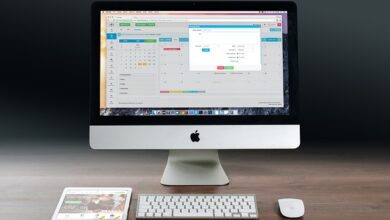How to Livestream on Twitch, YouTube & Facebook

Livestreaming has become one of the most popular ways to share content with a global audience. Whether you’re a gamer, vlogger, educator, or entertainer, platforms like Twitch , YouTube , and Facebook offer powerful tools to connect with your audience in real-time. This guide will walk you through everything you need to know about setting up and going live on these platforms.
1. Preparing for Your Livestream
Before diving into the technical details of streaming, it’s important to prepare properly. Here are some key steps:
a. Define Your Content
- Decide what type of content you want to stream (e.g., gaming, tutorials, Q&A sessions).
- Plan your stream schedule to build consistency and attract a loyal audience.
b. Gather Essential Equipment
- Webcam : For face-cam streams (Logitech C920 is a popular choice).
- Microphone : A good-quality mic ensures clear audio (e.g., Blue Yeti, Rode NT-USB).
- Lighting : Proper lighting improves video quality (ring lights or softbox kits work well).
- Capture Card : If you’re streaming console gameplay, a capture card (like Elgato HD60 S) is essential.
- PC/Laptop : Ensure your computer meets the requirements for streaming software.
c. Choose Streaming Software
- Popular options include:
- OBS Studio (free and open-source)
- Streamlabs OBS (user-friendly version of OBS)
- XSplit (paid, with advanced features)
- Restream.io (for multistreaming across multiple platforms)
2. Setting Up Your Stream
a. Install and Configure Streaming Software
- Download and install your chosen software (e.g., OBS Studio).
- Set up scenes and sources:
- Scenes : Different layouts for your stream (e.g., gameplay, face-cam, overlays).
- Sources : Add elements like webcam feed, game capture, images, and text overlays.
b. Optimize Audio and Video Settings
- Resolution : Aim for 1080p at 30fps or 60fps for high-quality streams.
- Bitrate : Adjust based on your internet upload speed (recommended: 3000–5000 kbps for 1080p).
- Audio Levels : Balance microphone and desktop/game audio to avoid distortion.
c. Create Overlays and Branding
- Use tools like Canva , StreamElements , or Placeit to design overlays, alerts, and panels.
- Include your logo, social media handles, and donation links for a professional look.
3. Going Live on Twitch
Step 1: Create a Twitch Account
- Sign up at twitch.tv .
- Customize your channel with profile pictures, banners, and panels.
Step 2: Get Your Stream Key
- Go to Creator Dashboard > Settings > Stream .
- Copy your unique stream key (keep it private!).
Step 3: Configure OBS for Twitch
- In OBS, go to Settings > Stream .
- Select “Twitch” as the service and paste your stream key.
- Test your stream by clicking “Start Streaming.”
Step 4: Engage with Your Audience
- Use chat moderation tools to manage interactions.
- Encourage viewers to follow, subscribe, and join your community.
4. Going Live on YouTube
Step 1: Enable Live Streaming
- Log in to your YouTube account.
- Verify your account if prompted (requires phone verification).
- Wait for YouTube to enable live streaming (may take 24 hours).
Step 2: Get Your Stream Key
- Go to YouTube Studio > Content > Live .
- Click “Stream” and copy your stream key.
Step 3: Configure OBS for YouTube
- In OBS, go to Settings > Stream .
- Select “YouTube / YouTube Gaming” as the service and paste your stream key.
Step 4: Start Your Stream
- Click “Start Streaming” in OBS.
- Monitor your stream on YouTube and interact with comments.
Pro Tip : Use YouTube’s built-in encoder if you don’t want to use third-party software.
5. Going Live on Facebook
Step 1: Create a Facebook Page (Optional)
- If you’re streaming as a creator or business, create a dedicated Facebook Page.
Step 2: Access the Live Stream Feature
- Go to your profile or page and click “Live” in the post composer.
Step 3: Get Your Stream Key
- Click “Use Stream Key” and copy the provided key.
Step 4: Configure OBS for Facebook
- In OBS, go to Settings > Stream .
- Select “Facebook Live” as the service and paste your stream key.
Step 5: Start Your Stream
- Begin streaming in OBS and monitor your Facebook feed for engagement.
6. Multistreaming Across Platforms
If you want to reach a wider audience without managing multiple streams separately, consider multistreaming . Tools like Restream.io allow you to broadcast simultaneously on Twitch, YouTube, Facebook, and other platforms.
How to Multistream
- Sign up for Restream.io and connect your accounts.
- Use their virtual camera feature or integrate with OBS.
- Start streaming, and Restream will distribute your content to all connected platforms.
7. Tips for a Successful Livestream
a. Promote Your Stream
- Announce your stream times on social media.
- Use hashtags and collaborate with other creators to grow your audience.
b. Interact with Viewers
- Respond to comments and questions in real-time.
- Use polls, giveaways, or shoutouts to keep viewers engaged.
c. Maintain Consistency
- Stick to a regular streaming schedule to build a loyal following.
d. Analyze Performance
- Check analytics on each platform to understand viewer behavior and improve future streams.
8. Troubleshooting Common Issues
a. Low Viewer Count
- Focus on promotion and consistency.
- Improve your content quality and branding.
b. Laggy Streams
- Lower your bitrate or resolution.
- Close unnecessary applications to free up system resources.
c. Audio/Video Sync Problems
- Adjust audio delay settings in OBS.
- Ensure your hardware is functioning correctly.




